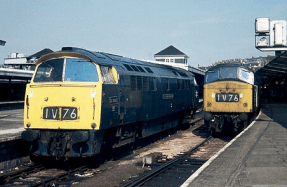STEAM RAIL MOTORS AND PUSH-PULL AUTO TRAINS IN THE WREXHAM DISTRICT

Apioneer Swindon auto train conversion entered traffic on the Great Western Railway less than a year after the first steam railmotors. Deployment in the summer of 1905 was to the Southall-Brentford branch in West London where seating capacity of ‘powered carriages’ had proved less than requirements. For similar reasons push-pull fitted auto sets were soon working through urban Plymouth and Devonport. One of twelve newly-fitted Class ‘517’ 0-4-2Ts went to Croes Newydd shed, Wrexham, in the autumn of 1905. Policies matched those of other rail groups seeking to reduce costs, compete with electric trams yet improve evident shortcomings of steam railmotors relating to available power, seating capacity and, vitally, reliability.


The GWR system of remote control with the locomotive propelling was mechanical. Movement of the regulator handle in the trailer cab was transmitted to the equivalent on the pushing engine footplate through a framework of swivelling rods and cranks passing under the vehicles and coupled between and below each pair of drawbars. On the footplate the rod links were attached to the regulator by a secured cotter pin assembled by the crew.1 Such a system could only control a maximum of two trailers in push mode although a second pair could be hauled, so four fitted trailers could be formed with the engine in the centre driven from end trailer cabs. Brakes were controlled in the remote cab by a handle that admitted air into the train vacuum circuit. Only when full vacuum pressure was in the pipes were brakes held off, so application was immediate. At first whistles were sounded by a steel wire threaded over vehicles, later coach circuits for lighting led to electric bell communication between driver, fireman on the footplate and guard. A gong was also fitted to driving trailer cab fronts when it was found that approaching autos were less audible to trackside staff in push mode.
Several control actions were carried out on the footplate by the fireman, most notably ‘notching up’ of the reversing gear. Releasing brakes when standing by means of the engine ejector followed a ‘two short’ code ‘bell’ from the driver. Firemen could also address slipping and priming. What now seems a primitive system worked because every aspect devolved to the three members of crew working the train and differed only minimally from established practice. Much of the equipment was also
You’re reading a preview, subscribe to read more.
Start your free 30 days



